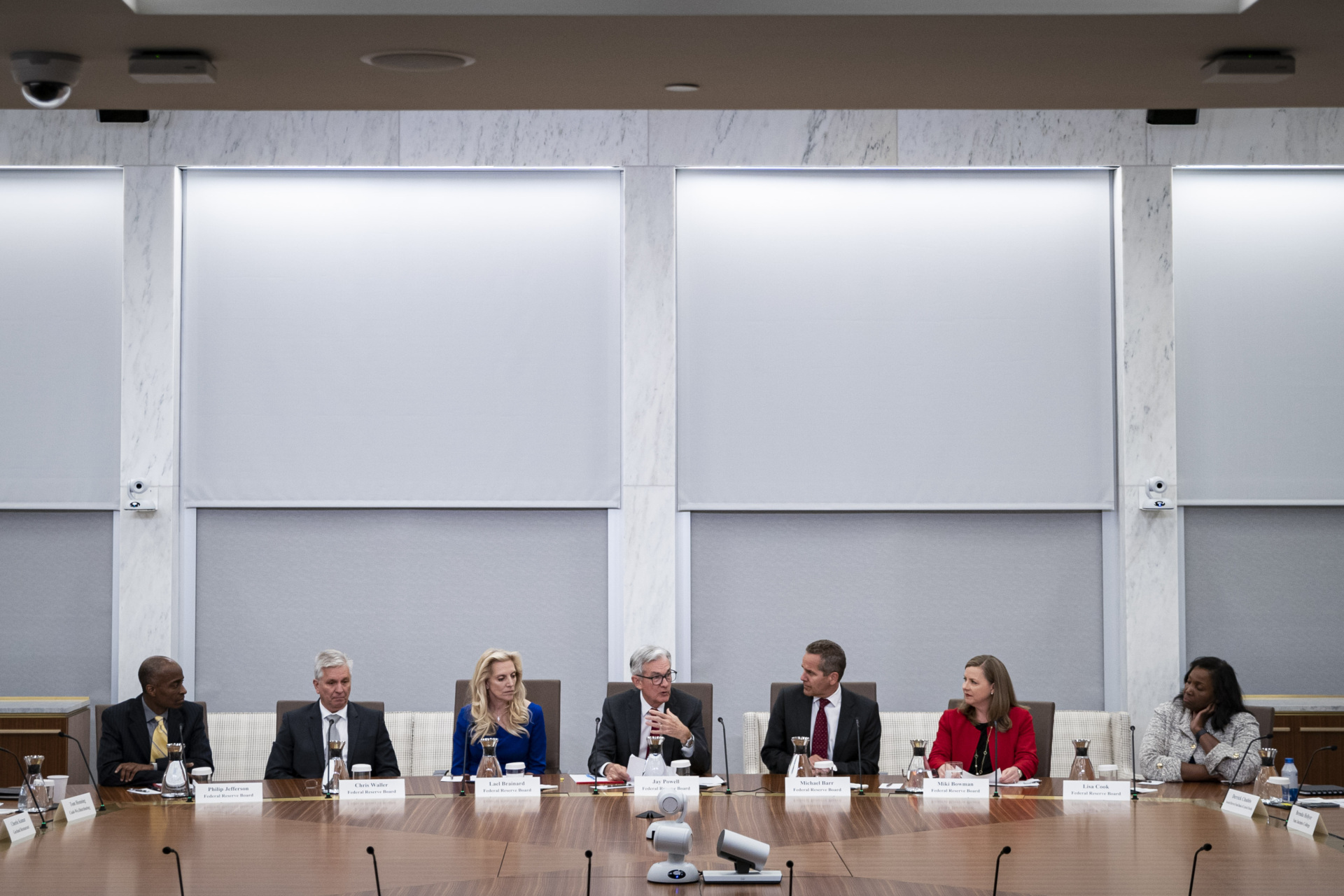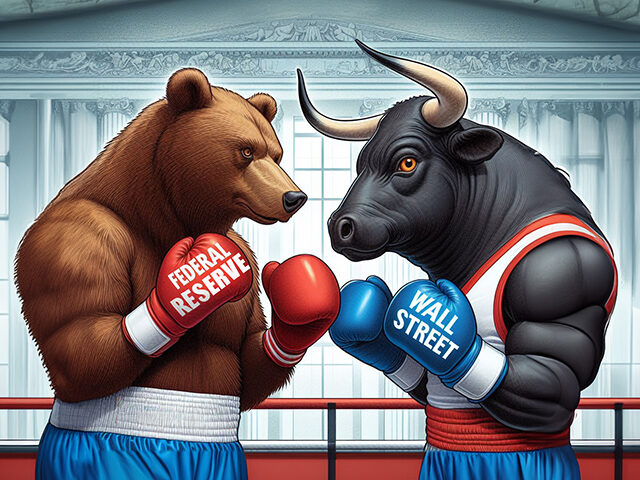Will the Fed Push Back on Rate Cut Expectations?
When the Federal Reserve meets this week it will be confronted by two forces pulling monetary policy in opposite directions: the widespread anticipation that the Fed will cut rates five or more times this year and the growing evidence that household sector demand is rising.
Fed officials will have to decide whether to push back on the market expectations of rate cuts and how hard to push back. We’ve heard some hints of pushback from Fed officials such as Gov. Chris Waller and Atlanta Fed President Raphael Bostic but nothing strong enough to seriously cause investors to rethink the conviction that the federal funds rate will drop to somewhere between 3.75 percent and 4.25 percent by December.
When Fed officials met back in December, the Summary of Economic Projections (SEP) showed a median forecast for the fed funds rate to fall to 4.6 percent by the end of 2024, which would put the target range at 4.5 percent to 4.75 percent. So, the market is currently pricing in at least two more cuts than the Fed had forecast. Fed funds futures currently imply just a three percent chance the year-end fed funds rate will be as high as the median view of Fed officials and no chance it will be higher.
The market has backed off the view that the Fed will cut rates in March. At one point, this was being priced in as a near certainty. Now it looks like a 50-50 bet, according to the odds implied by fed funds futures prices.
There’s near universal agreement that the Fed will not cut rates at this week’s meeting. That’s a change from the end of December, when the market was seriously thinking the Fed would quickly start cutting and was giving one-in-five odds of a January cut.
What the Real Rate Tells Us
The principal driver of the view that the Fed will cut significantly this year is the observation that the inflation-adjusted or “real” fed funds rate is high by recent historical standards. Last month, the real fed funds rate was 2.9 percent, according to Joe Lavorgna, the chief U.S. economist at SMBC Nikko Securities. That’s the highest since August 2007, Lavorgna points out. (To get the real rate, Lavorgna subtracts the 12-month personal consumption expenditure price index increase—2.8 percent in December—from the top of the range of the nominal fed funds rate, 5.5 percent).
Since inflation has fallen rapidly over the past year, that high of a real rate strikes many as overly restrictive. What’s more, if you think inflation will continue to decline in the months ahead, the real rate will mechanically rise even if the Fed does nothing at all to its rate target. If PCE inflation drops to 2.2 percent—which is where the Cleveland Fed’s inflation Nowcast is currently reading for January—the real rate would rise to 3.2 percent.

From left to right: Federal Reserve officials Philip Jefferson, Christopher Waller, Lael Brainard, Jerome Powell, Michael Barr, Michelle Bowman, and Lisa Cook attend a Fed Listens event in Washington, DC, on Sept. 23, 2022. (Al Drago/Bloomberg via Getty Images)
As Lavorgna points out, the Fed says it is targeting two percent inflation, and its long-run tendency for the fed funds rate has a midpoint of 2.75 percent. That means the Fed is targeting a real rate of 0.75 percent. Clearly, a real rate of 3.2 percent would be very far above what the Fed thinks is normal and healthy.
It’s worth noting, however, the Fed’s projections through the end of this year show a median expectation of a real rate of around 2.35 (using the top of the target range for consistency here). For 2025, the projected real rate falls to 1.65 percent; and for 2026, it falls to one percent. So, the view at the Fed is that the real rate should and probably will be elevated by historical standards for years to come.
That is to say, the inflation rate would have to fall to 1.65 percent to justify a Fed rate cut to four percent if the Fed keeps its implied real rate target unchanged. It takes an extremely dovish view of inflation to see it falling that far by year end.
Of course, if inflation does fall rapidly, the Fed can—and probably would—also revise down its view of the appropriate real rate. So, the view implied by financial markets today is not impossible, but it would require a lot to change over the course of this year.
Fed Chairman Jerome Powell’s press conference will give the Fed the opportunity to tell market participants whether or not that’s a sensible position to take. Will the Fed defend the position it staked out in December or capitulate to the view of bond traders?

COMMENTS
Please let us know if you're having issues with commenting.